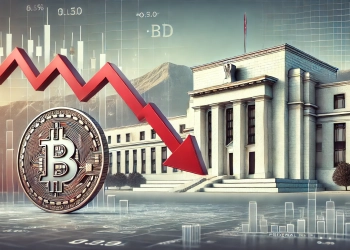While discussing Trump’s win, U.S. Senator Lummis made a big announcement, unveiling a crucial new legislative proposal aimed at the Federal Reserve. On November 6, Senator Lummis reminded everyone of her plan to use America’s $12 billion Bitcoin stockpile to help tackle the country’s growing debt.
Senator Lummis first shared her idea at the Bitcoin 2024 conference in Nashville in July, where Trump also said he’d stop state-backed Bitcoin sales—a move praised by crypto fans.
WE ARE GOING TO BUILD A STRATEGIC BITCOIN RESERVE 🇺🇸 🇺🇸 🇺🇸
— Senator Cynthia Lummis (@SenLummis) November 6, 2024
This bold move would give the US around 5% ownership of the Bitcoin network, aligning with its share of the global gold supply. If approved, it would strengthen US influence in digital assets and mark a first step toward adding Bitcoin to national reserves.
How Senator Lummis Plans to Implement the Bitcoin Reserve
Senator Lummis reaffirmed her vision for the U.S. to build a strategic Bitcoin reserve. She emphasized the importance of the Federal Reserve accumulating Bitcoin to strengthen the U.S. dollar and tackle the national debt. Officially titled the “Innovative Investment for National Competitiveness Enhancement Act,” the proposal is often referred to as the “Bitcoin Bill.”
If Republicans gain control of Congress, it could help drive forward a bill making this proposal into formal legislation. Stand With Crypto reports that 247 pro-crypto candidates won seats in the House, with some Senate seats still in play.

The new Trump-Vance administration might issue an executive order instructing the Treasury to allocate specific funds toward acquiring Bitcoin. Back in 2022, President Biden authorized releasing 180 million barrels from the Strategic Petroleum Reserve to tackle high fuel prices. Similarly, Bitcoin here would be viewed as a strategic asset rather than currency, helping it bypass certain regulatory roadblocks.
Building a larger, ongoing Bitcoin reserve would likely need congressional approval due to the multi-year budgeting involved. Despite Trump’s support for crypto, opposition from traditionalist members in Congress—who may see Bitcoin as too risky for national reserves—could slow down progress.
The Treasury Department could handle the reserve, much like it manages gold holdings, using diversified funds within the Federal Reserve System to acquire Bitcoin.
There would be real challenges in moving forward with this, as Senate and House committees would probably examine the risks of adding a volatile asset like Bitcoin to the national balance sheet, especially with bipartisan concerns over cryptocurrency’s long-term stability.
Why The Proposal is Unlikely to be Implemented Soon

With inflation still a top concern, any plan involving Bitcoin could face pushback from both the public and policymakers. Even a $200 billion Bitcoin fund would barely make a dent in the U.S. debt, which now stands at $35.9 trillion.
Right now, it’s unlikely such a proposal would get enough support from lawmakers, even if limited actions could be taken by executive order. Big moves, like large-scale asset purchases, would need Congress on board, making a full reserve plan unlikely over the next two years.
As the next administration takes on this idea, the outcome will depend on balancing economic goals with political realities. For now, though, Bitcoin’s path to becoming a national reserve asset looks like a steep uphill climb.
In summary, Senator Lummis’ push for a national Bitcoin reserve shows rising interest in digital assets, but there are big obstacles. Even if Trump’s administration supports it, the plan would need strong backing from Congress. With inflation concerns and scepticism from the public, a Bitcoin reserve alone won’t make much of a dent in the U.S. debt. For now, a full-scale plan isn’t likely, but these discussions could pave the way for new financial approaches in the future.
For more information on how the Senator Lummis plan and the US election impacts the economy, follow TurkishNY Radio on Tumblr, Telegram, and LinkedIn.









